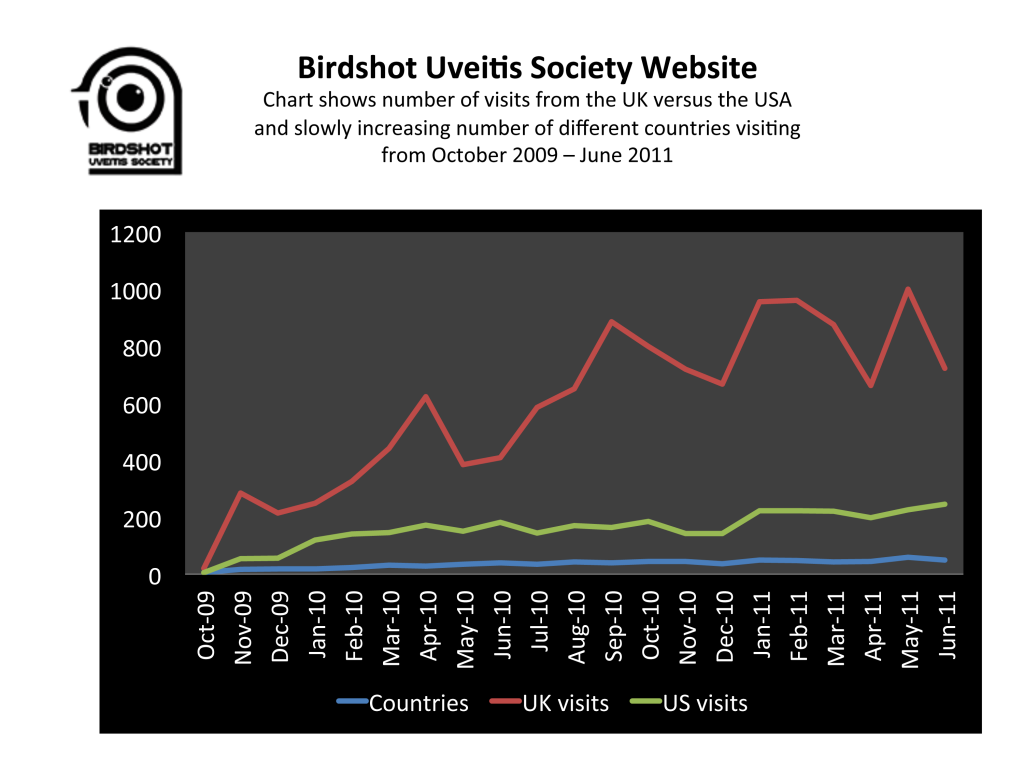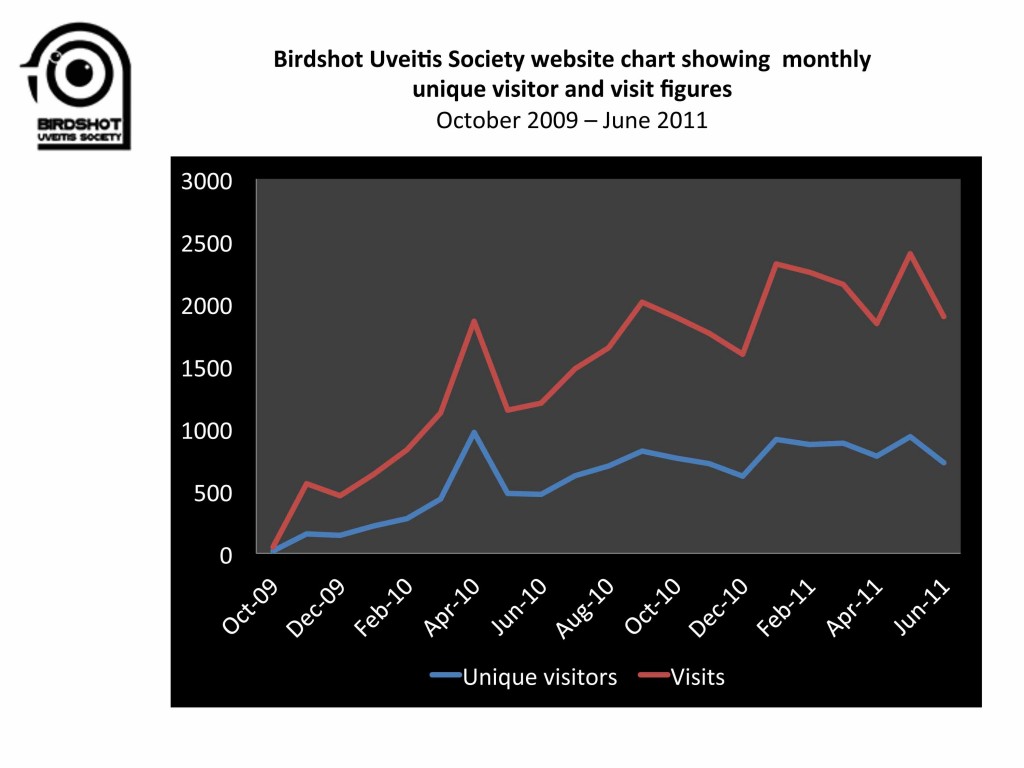We read about a phase 2 trial on the Birdshot Lefora Forum. The trial is being conducted at Johns Hopkins University, USA with sirolimus, also known as rapamycin and Rapamune®. Sirolimus is an immunosuppressant that inhibits the response to interleukin-2 (IL-2), and therefore blocks activation of T- and B-cells. It has a similar immunosuppressive effect to tacrolimus, but tacrolimus inhibits the production of IL-2 (rather than inhibiting the response).
This seems like a promising trial and, depending on the results, sirolimus may well be yet another useful medication for people with Birdshot who do not respond so well to the ‘traditional’ medication regimen of prednisolone and mycophenolate mofetil.
The clinical trial information below was obtained from http://clinicaltrials.gov/ct2/show/NCT01280669
Phase 2 of the trial is looking at the safety and effectiveness of two different doses (440mcg/mcL and 880mcg/mcL) of sirolimus, administered intravitreally (injections inside the eye) in patients with uveitis.
The trial is examining whether these doses can be used to control inflammation in non-infectious uveitis, whilst avoiding the potential complications associated with systemic drugs (i.e. drugs that are administered orally, subcutaneously, intramuscularly, or intravenously and thus can affect the whole body). Therefore, if proven effective, it may offer a safer way of controlling inflammation.
It does seem that quite a lot of work is now being undertaken around a range of non-systemic solutions – we have already reported on Retisert® and Ozurdex® – and non-systemic therapy may well be a safer way forward.
Birdshot Patients’ experience
It is early days but this is the latest news on the novel sirolimus treatments that we have heard from 2 people who have been on this particular trial.
” I was in the first sirolimus clinical trial at Hopkins and I’m waiting for the second series to begin. It has been approximately 6 months that I have not received injections and I’ve only had a couple of flare-ups. I can not tolerate steroids and Cellcept®, LX211 was ok, but taking 12 pills a day was not something I liked to do. The shots are my choice, one in each eye every other month. There will be a new sirolimus trial beginning any day now. I recommend it.” February 2011
Here is another person’s positive experience. This time on Phase 2.
“It has now been 5 months and I think I am doing great! I am going thru a battery of tests next month, but I am hopeful I will receive good results. What I do know is I am off Cellcept® and Neoral®since November, and prednisone has been reduced from 60mg to 8. I no longer have floaters, flies or other types of bugs and the glare has greatly improved. So much in fact I can drive at night under certain conditions. Johns Hopkins is starting Phase 2 and 3 at the same time and they are having great results with more than one disease. I think it is wise to learn more about this trial.
I believe 200 hospitals will also be doing this trial very soon. Sirolimus is the drug that is injected. So far so good. The only side effect I have had so far is loss of hair, but it is slowing down on the amount of hair lost.” June 2011
A bit more about Sirolimus
Sirolimus (also known as rapamycin) is an old drug. It was approved by the FDA in 1999. It was originally developed as an antifungal agent. However, this use was abandoned when it was discovered to have potent immunosuppressive and antiproliferative properties. It has since been shown to prolong the life of mice and might also be useful in the treatment of certain cancers.
What’s of interest for us?
- Compared to calcineurin inhibitors (such as ciclosporin, tacrolimus, azathioprine), it is less likely to cause kidney damage.
- It is available in generic versions so it is not prohibitively expensive.
- It has been used for some time for other conditions (not for uveitis) so its side effects are generally known.
- There should be no systemic side effects as it is being injected invitreally.
We look forward to hearing the full results of the study once it is completed. If it is being rolled out across 200 hospitals it is possible that some of these hospitals could be in the UK.












